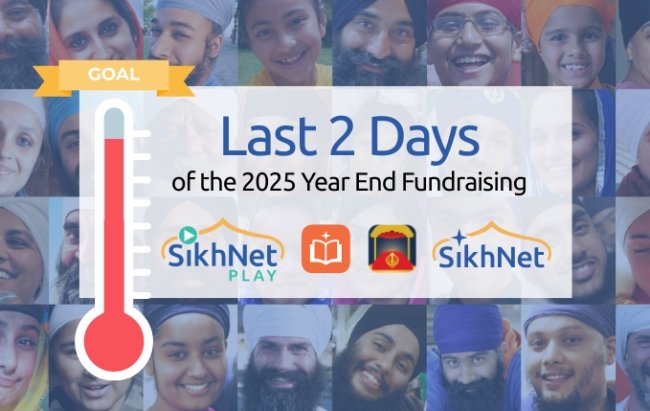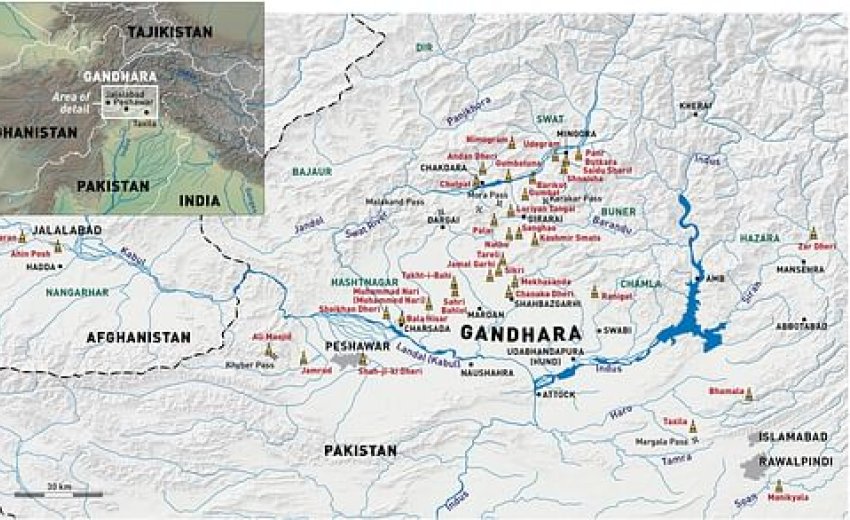-- Philosophy of Mohyal Brahmins Akin to Sikhi ---
_________________________________________
Center of Origin of Mohyal Brahmins
Mohyal Brahmins, who are sometimes called Warrior Brahmins, originated from the Ghandhara region of ancient India (Now divided between North-Eastern Afganistan and Khaiber Pakhtunkhwa). Prior to the partition of India, Mohyal Brahmins lived primarily in the Potohar and Doaba region of Northern Punjab (Rawalpindi, Maree, Chakwal, Jehlum, Jalandhar and Hoshiarpur) and the Pahari regions of Jammu and Kashmir (Pulandari, Mirpur, Poonch, Rawlakote, Jammu, Bagh, Haveli, and Rajouri). After the partition, they migrated to Indian states of Punjab, Haryana, Jammu & Kashmir and Delhi. Mohyal Brahmins were not priests and were warriors, spiritual healer and preachers. They comprised 7 clans named Bali, Bhimwal, Chhiber, Datt, Lau, Mohan and Vaid.
Who is Brahmins according to Gurbani
In Sikh Philosophy, a Brahmin is a person who contemplates on Brahm – The Inner Soul. Following are a few quotes which focus on the actual meaning of Brahmin in Gurmut Philosophy:
1. ਕਹੁ ਕਬੀਰ ਜੋ ਬ੍ਰਹਮੁ ਬੀਚਾਰੈ ॥ ਸੋ ਬ੍ਰਾਹਮਣੁ ਕਹੀਅਤੁ ਹੈ ਹਮਾਰੈ ॥੪॥੭॥
Says Kabeer, one who contemplates Brahm, is said to be a Brahmin among us. ||4||7|| (Kabir)
2. ਬ੍ਰਹਮੁ ਬਿੰਦੇ ਸੋ ਬ੍ਰਾਹਮਣੁ ਕਹੀਐ ਜਿ ਅਨਦਿਨੁ ਹਰਿ ਲਿਵ ਲਾਏ ॥ ਸਤਿਗੁਰ ਪੁਛੈ ਸਚੁ ਸੰਜਮੁ ਕਮਾਵੈ ਹਉਮੈ ਰੋਗੁ ਤਿਸੁ ਜਾਏ ॥
One who understands Brahm, who lovingly centers his mind on the Lord night and day, is called a Brahmin. Consulting the True Guru, he practices Truth and self-restraint, and he is rid of the disease of ego. (Nanak 5)
3. ਸੋ ਬ੍ਰਾਹਮਣੁ ਬ੍ਰਹਮੁ ਜੋ ਬਿੰਦੇ ਹਰਿ ਸੇਤੀ ਰੰਗਿ ਰਾਤਾ ॥ ਪ੍ਰਭੁ ਨਿਕਟਿ ਵਸੈ ਸਭਨਾ ਘਟ ਅੰਤਰਿ ਗੁਰਮੁਖਿ ਵਿਰਲੈ ਜਾਤਾ ॥
He alone is a Brahmin, who knows the Brahm, and is attuned to the Love of the Lord. God is close at hand; He dwells deep within the hearts of all. How rare are those who, as Gurmukh, know Him. (Nanak 3)
4. ਸੋ ਬ੍ਰਾਹਮਣੁ ਜੋ ਬ੍ਰਹਮੁ ਬੀਚਾਰੈ ॥ ਆਪਿ ਤਰੈ ਸਗਲੇ ਕੁਲ ਤਾਰੈ ॥੩॥
He alone is a Brahmin, who contemplates Brahm. He saves himself, and saves all his generations as well. ||3|| (Nanak 1)
5. ਮਨ ਕੀ ਪਤ੍ਰੀ ਵਾਚਣੀ ਸੁਖੀ ਹੂ ਸੁਖੁ ਸਾਰੁ ॥ ਸੋ ਬ੍ਰਾਹਮਣੁ ਭਲਾ ਆਖੀਐ ਜਿ ਬੂਝੈ ਬ੍ਰਹਮੁ ਬੀਚਾਰੁ ॥
To read the horoscope of the mind, is the most sublime joyful peace. He alone is called a good Brahmin, who understands God in contemplative meditation. (Nanak 3)
In Guru Granth Sahib, hymns of Ramanand, Jaidev, Bhatt, Kalshar, Bhatbalh, Bhatbhika, Bhatgyanand, Bhatharbans, Bhatjalap, Bhatkeerat, Bhatmathra, Bhatnalh, Bhatsalh are included because they did not believe in idol worship and contemplated on Brahm. If the concept of Brahmin highlighted in Guru Granth Sahib is kept in view then the philosophy which Mohyal Brahmins followed can be considered Akin to Sikhi.
Fighters against oppression
In the History of Mohyals: the militant Brahmin clan on India by TP Russel Stracy (1911), a reference is made to a ballad (Kabitt) from folk lore which describes in poetic form the presence of Brahmins of Datt Clan, also called Mohyals in Arabia and their subsequent role in the Battle of Karbala. It is mentioned at that time 1400 Brahmins lived in Baghdad alone. The Brahmins who took part in Battle of Karbala are called Hussaini Brahmins. It is said that their ancestors, Rahab Sidh Datt had sacrificed his 7 sons for Imam Hussain in 680 AD. It is further mentioned, that, this dynasty had ruled Afghanistan for 120 years from 830 AD to 930 AD. The dynasty was founded by Somanand who himself ruled for 48 years. The birth of Hussaini Brahmin community has many versions included in Sisir Kumar Mitra’s book – The Vision of India. It is mentioned there that large population of Hindus lived in Arabia before the battle of Karbala. They were mostly traders and the chief among them was Rahab Sidh Datt who was closely associated with Prophet Mohammad’s family.
It is relevant to mention that the famous battle of Karbala was fought against Caliph Yazeed, who had turned corrupt and spread a cruel rule in the region of Al-Sham area (which is now demarcated as Iran, Iraq and Syria). Since the grandson of Prophet, Imam Hussain took objection to his unjust methods, Yazeed launched a war against him. Despite knowing the facts that he was participating in a one sided battle which is destined to be lost, Datt joined the forces of Hussain.
According to Sunita Jhingran, who claims to be a Mohyal descendent of Rehab Sidh Datt, “Our ancestors joined the forces because Imam Hussain was fighting against the oppression of people under Yazeed’s rule. He was fighting for true Islam, which was propagated by beloved prophet. Rahab Sidh Datt was a warrior who joined the forces of the Imam since he was standing for the righteous.”
According to Vipin Mohan Jhingran, who claims to be a Hussaini Brahmins, Rehab Sidh Datt met Hussain’s sister Jainab, who after hearing the story of Datt sacrificing 7 sons in Battle of Karbala stated “that from now you are not just Brahmins but Hussaini Brahmins”. Shia Cleric based in Lahore, Maulan Hasan Zafar Naqvi validates the fact that the Mohyals participated in the war of Karbal since they had good relations with Caliph Ali, the father of Imam Hussain. Therefore, it is required that during a Tajya procession in Muharram, both the communities should recall the martyrdom of Imam Hussain and sacrifice made by Mohyals to safeguard his honor.
Contribution of Mohyals to Sikhism – Although the majority of Mohyal Brahmins identify themselves as Hindus but some also identify themselves as Sikhs. Manu Hindus including Mohyal Brahmins were attracted to the teachings to Guru Nanak in Medieval India. This devotion towards Guru Nanak’s teachings led them to follow his successors and then assists in creation of the Sikhi ethos. Moreover, as the later Guru’s became Martial’s, this community was a natural home for the warrior class of Mohyal Brahmins.
When emperor Aurangjeb is said to have intensified his fanatical plans for forcibly converting Hindus of Kashmir to Islam them Pandit Kirpa Ram Dutt took a delegation of 500 Pandits to Guru Teg Bahadur. The delegation of Kashmiri Pandits supplicated in front of the Guru for a solution. Guru Ji replied “Such activities can only be stopped by a sacrifice of a great person”. At that time young Gobind Rai (who later became Guru Gobind Singh Ji) walked into the meeting to find his father lost in deep thoughts. He enquired about the reasons and suggested “who else is greater than you, oh father?” Guru Teg Bahadur told the Brahmins to tell Aurangjeb, if he can convert thier Guru then they will all become Muslims. Kirpa Ram Dutt conveyed the message and summons were issued to Guru Ji to visit Delhi. It is relevant to observe that Pandit Kirpa Ram Dutt was son on Pandit Arru Ram Dutt, of Mattan Kashmir. For generations, the Dutt family was associated with Sikhism. Pandit Kirpa Ram’s grandfather, Pandit Brahm Das had met Guru Nanak at the site of twin springs at Mattan during Guru Ji’s third Udasi.
Before Guru Teg Bahadur was martyred at Chandni Chownk Delhi, Bhai Mati Das and his brother Bhai Sati Das, who belonged to Mohyal Brahmins family of the Chhibber clan were martyred. It is relevant to observe that both the brothers were sons of Hira Nand, a disciple of Guru Hargobind under whom he had fought in many battles and was a great warriors. Hira Nand was the grandson of Lakhi Das, the son of Bhai Praga, who was also a martyr and had been a jathedar in Guru Hargobind’s first battle. The Bhai Mati Das and Sati Das museum was build in honor of both Mohyal brothers opposite Gurudwara Sis Ganj
Conclusion
From the instances quoted in the earlier paragraphs, it become obvious that Mohyal Brahmins who were warriors and not priests were always ready to lay down their lives so that justice prevails. If the help given by Hussaini Brahmins in the Battle of Karbala is remembered in Islam then the relationship between both the major communities of India would become friendly. Similarly, if the sacrifice of the Mohyal Brahmins and Guru Teg Bahadur is remembered then the relationship between Hindus and Sikhs would always remain brotherly. It is further relevant to observe that Pandit Kirpa Ram Dutt became Sardar Kirpa Singh in 1699 and became martyr in Battle of Chamkaur. In modern times Mohyals have occupied very high positions in Civil and Army in India. According to Guru Amar Das Ji, “Stories of our ancestor make us good children.” Therefore, the stories of Rehab Sidh Datt, Pandit Kirpa Ram, Bhai Mati Das and Sati Das can generate friendly relations between the communities in our country.

